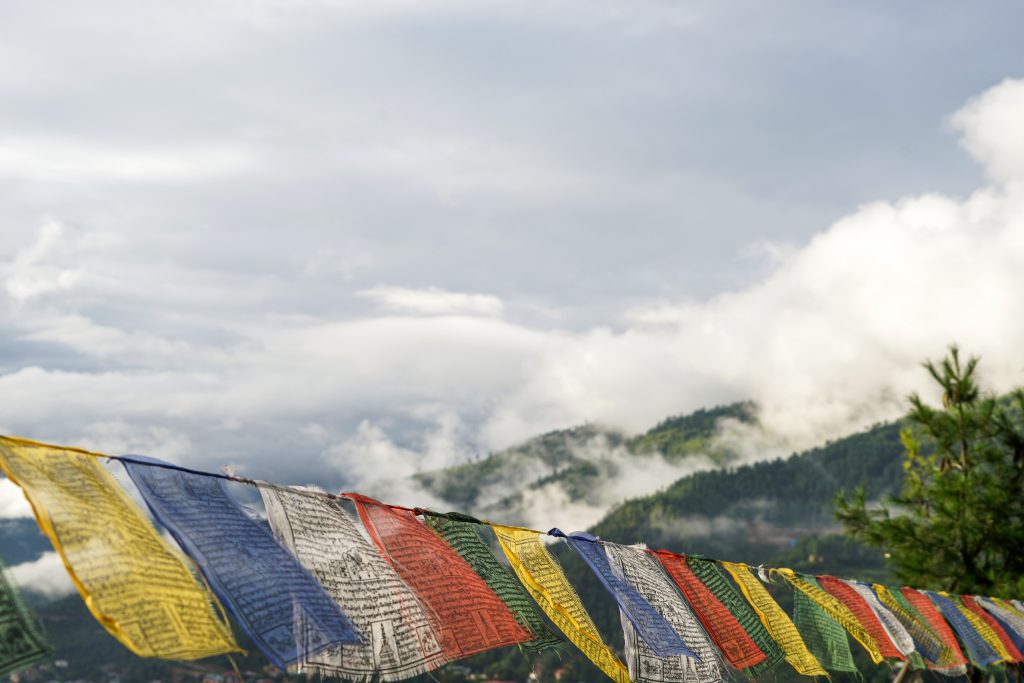Blowing In The Wind

Prayer flags are an integral part of Bhutanese cultural heritage. Indeed, they are everywhere, alongside highways, on high mountain passes, in and around monasteries and dzongs, and the mighty peaks that look over the country. The Bhutanese believe that with each flutter, a flag releases the prayer it carries into the air, which in turn carries it to the heavens. So, the more the flag flaps, the greater its divine value. It is for this reason that prayer flags are positioned to catch the wind – high up in the forested mountain slopes, across bridges, near rivers and streams that tumble down the valleys, and any place else where there is a wind tunnel effect.
The intensity of the wind is not the only criterion, however, in positioning prayer flags. They are also placed around sacred sites, from monasteries to homes and farmlands, to protect people with a shield of divinity. The different hues used in a prayer flag represent the five elements in nature: red for fire, blue for water, yellow for earth, white for sky, and green for vegetation and life. Undeniably, the prayer flags serve as the bridge between heaven and earth in Bhutan.
What is worthy of note is that prayers taken from Buddhist scriptures and printed on the flag differ from those put up for the dead and those meant to help the living during their life on earth. The prayers for each occasion and situation, accompanied by their own special symbols, are etched onto wooden printing blocks that are dipped in ink and embossed onto the flag. Flags flown on posts may contain a number of prayers on the same strip of fabric – each flutter releasing them all in the wind.
So, next time you come across one while journeying through Bhutan, know that it reflects the essence of the Bhutanese people whose spirituality is deeply rooted in the land.

